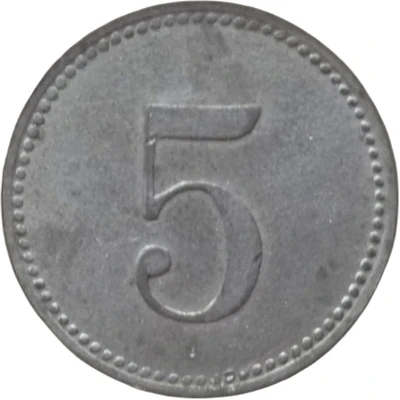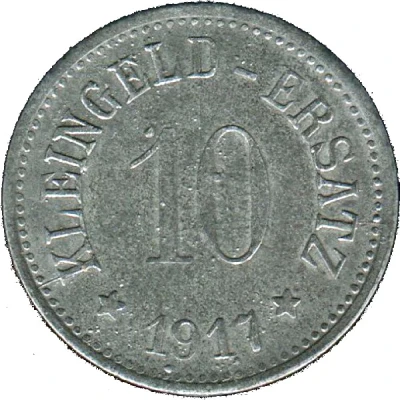


© gyoschak (CC BY-NC-SA)
10 Pfennigs - Gunzenhausen ND
1917 year| Zinc (exists also nickel plated) | 1.6 g | 19.0 mm |
| Issuer | City of Gunzenhausen (Federal state of Bavaria) |
|---|---|
| Emperor | William II (Wilhelm II) (1888-1918) |
| Type | Standard circulation coin |
| Year | 1917 |
| Value | 10 Pfennigs (10 Pfennige) (0.10) |
| Currency | Mark (1914-1924) |
| Composition | Zinc (exists also nickel plated) |
| Weight | 1.6 g |
| Diameter | 19.0 mm |
| Thickness | 1.0 mm |
| Shape | Round |
| Technique | Milled |
| Orientation | Medal alignment ↑↑ |
| Demonetized | Yes |
| Updated | 2024-10-04 |
| Numista | N#90812 |
|---|---|
| Rarity index | 82% |
Reverse
Pearl rim, with denomination centered
Script: Latin
Lettering: 10
Edge
Plain
Comment
Issuing body: [Stadt, Bayern].Interesting fact
One interesting fact about the 10 Pfennigs - Gunzenhausen ND (1917) coin is that it was issued during a time of economic turmoil in Germany, known as the "Inflationary Period" (1914-1923), when the value of the German mark plummeted, and the prices of goods and services skyrocketed. To combat this issue, the government introduced a new currency, the "Papiermark," which was backed by a gold reserve and had a more stable value. The 10 Pfennigs coin was part of this new currency system and was used widely in everyday transactions.



